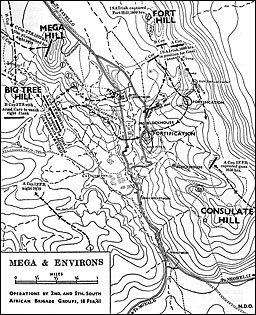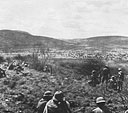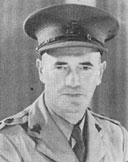
13
Battle of Mega
The stream of messages passing between Divisional Headquarters and the two brigades approaching Mega placed a heavy strain on the Divisional Signals Company. For No. 1 Brigade Signals Company, S.A.C.S., with an approach entirely on foot, the task of maintaining communications with 5th S.A. Infantry Brigade was particularly difficult, as the combination of mountains and bad weather militated against efficient use of wireless. Telephone lines were laid behind the infantry as they advanced and the Brigade Headquarters signals platoon under Captain C. H. M. Morillion carried this line right forward to a central point between 3rd Transvaal Scottish and the S.A. Irish and then spread laterally to the two Battalion Headquarters. From there, the battalion signals officers, Lieutenants E. G. Adderley and D. W. V. Frykberg, took over. Communications were kept open with barely an interruption though the line from Brigade Headquarters was blown up by enemy shellfire three times.
On 17 February, the advance of 3rd Transvaal Scottish, through thick mud among boulders and bushes, was painfully slow and the men, encumbered as they were with mortars, Vickers guns and ammunition, were subjected to great physical strain. Their one consolation was that they struck no serious man-made obstacles, with the result that the accompanying Sappers were not called upon to lift mines or blow wire entanglements.
Along the worse ridges east of the road from Yavello and opposed by a succession of defended posts and well-sited landmines, 1st S.A. Irish struggled laboriously forward, always in the hope of eventual support on the left flank from 2nd S.A. Infantry Brigade Group's expected attack from the east.
For almost an hour from 8 a.m. the advancing troops came under heavy enemy artillery fire, and the S.A. Irish at about midday ran into landmines. A subsection of 5th Field Company, S.A.E.C. had reported to Major A. W. Clare, the Second-in-Command of the S.A. Irish, at about 8 o'clock but had been told to go on with road clearance, which they did to such good effect that by 10 a.m. the road was free of mines as far as Two Tree Hill. It was 1 o'clock before the Sappers heard that Major Clare himself had been blown up on a landmine, receiving wounds from which he died on 19 February.
Not long afterwards, Private P. A. Zwanepoel, a Vickers-gunner, was





